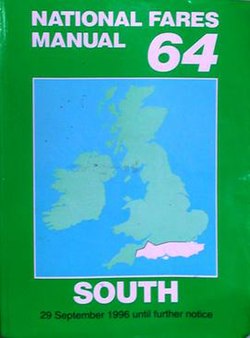
Nederlandse Spoorwegen is the principal passenger railway operator in the Netherlands. It is a Dutch state-owned company founded in 1938. The Dutch rail network is the busiest in the European Union, and the third busiest in the world after Switzerland and Japan.
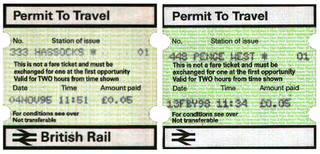
In the ticketing system of the British rail network, a Permit to Travel provisionally allows passengers to travel on a train when they have not purchased a ticket in advance and the ticket office of the station they are travelling from is closed, without incurring a penalty fare.

The Mass Transit Railway (MTR) is a major public transport network serving Hong Kong. Operated by the MTR Corporation (MTRCL), it consists of heavy rail, light rail, and feeder bus service centred on a 10-line rapid transit network serving the urbanised areas of Hong Kong Island, Kowloon, and the New Territories. The system included 245.3 km (152.4 mi) of rail as of December 2022 with 179 stations, including 99 heavy rail stations, 68 light rail stops and 1 high-speed rail terminus.

The Kowloon–Canton Railway was a railway network in Hong Kong. It was owned and operated by the Kowloon–Canton Railway Corporation (KCRC) until 2007. Rapid transit services, a light rail system, feeder bus routes within Hong Kong, and intercity passenger and freight train services to China on the KCR network, have been operated by the MTR Corporation since 2007.
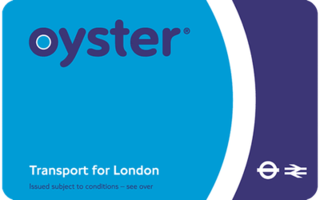
The Oyster card is a payment method for public transport in London in England, United Kingdom. A standard Oyster card is a blue credit-card-sized stored-value contactless smart card. It is promoted by Transport for London (TfL) and can be used on travel modes across London including London Buses, London Underground, the Docklands Light Railway (DLR), London Overground, Tramlink, some river boat services, and most National Rail services within the London fare zones. Since its introduction in June 2003, more than 86 million cards have been used.

The Travelcard is an inter-modal travel ticket for unlimited use on the London Underground, London Overground, Elizabeth line, Docklands Light Railway, London Trams, London Buses and National Rail services in the Greater London area. Travelcards can be purchased for a period of time varying from one day to a year, from Transport for London, National Rail and their agents. Depending on where it is purchased, and the length of validity, a Travelcard is either printed on a paper ticket with a magnetic stripe or encoded onto an Oyster card, Transport for London's contactless electronic smart card, or an ITSO smartcard issued by a National Rail train operating company. The cost of a Travelcard is determined by the area it covers and, for this purpose, London is divided into a number of fare zones. The Travelcard season ticket for unlimited travel on London Buses and the London Underground was launched on 22 May 1983 by London Transport. One Day Travelcards and validity on other transport modes were added from 1984 onwards. The introduction of the Travelcard caused an increase in patronage and reduced the number of tickets that needed to be purchased by passengers.

The West Rail line was a rapid transit line that formed part of the Mass Transit Railway (MTR) system in Hong Kong until 27 June 2021. Coloured magenta on the MTR map, the line ran from Tuen Mun to Hung Hom, with a total length of 35.7 kilometres (22.2 mi), in 37 minutes. The railway connected the urban area of Kowloon and the new towns of Yuen Long, Tin Shui Wai and Tuen Mun in the northwestern New Territories.

The Light Rail, also known as the Light Rail Transit (LRT), officially the North-West Railway, is a light rail system in Hong Kong, serving the northwestern New Territories, within Tuen Mun District and Yuen Long District. The system operates over 1,435 mmstandard gauge track, using 750 V DC overhead power supply. It was once one of four systems comprising the KCR network in Hong Kong, before the MTR–KCR merger in 2007. It has a daily ridership of about 483,000 people.
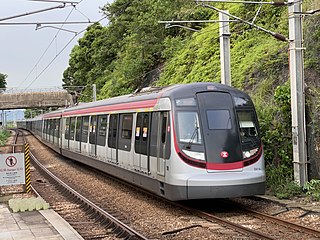
The East Rail line is one of the ten lines that form MTR, the mass transit system in Hong Kong. The railway line starts at Lo Wu or Lok Ma Chau, both of which are boundary crossing points into Shenzhen and joins in the north at Sheung Shui and ends at Admiralty station on Hong Kong Island. At approximately 46 km (29 mi), the line is the second longest line within the network, behind the Tuen Ma line. The line's colour is light blue.

The Airport Express is one of the ten lines of the Hong Kong MTR system. It links the urban area with the Hong Kong International Airport and the AsiaWorld–Expo exhibition and convention centre.

Admiralty is a station of the MTR rapid transit system in Admiralty, Hong Kong.

Lo Wu is the northern terminus of the East Rail line of Hong Kong, located in Lo Wu within the Closed Area on Hong Kong's northern frontier. The station serves as a primary checkpoint for rail passengers between Hong Kong and mainland China and vice versa, rather than serving a specific area. It is also the northernmost railway station in Hong Kong.

Sheung Shui is the penultimate northbound station on the East Rail line in Hong Kong. This station serves as the northern terminus of the East Rail line after the Lo Wu and Lok Ma Chau boundary crossings have closed for the day. It is also the last northbound station on the East Rail line that passengers without a Closed Area Permit, Mainland Travel Permit, or valid passport and mainland Chinese visa may freely travel to.
The London Underground and Docklands Light Railway (DLR) metro systems of London, England uses a mix of paper and electronic smart-card ticketing.
There is no single 'discount railcard' available on the UK railway network. In addition to the large number and variety of short-term or localised promotional fares that have been available to passengers on the British railway network in recent decades, there are many permanent concessionary fare schemes available to passengers. Some of these take the form of Railcards, which can be purchased by people who qualify according to the conditions, and which give discounts for all journeys over a period; other concessions are available for individual journeys. In all cases, details of the type of concession will be printed on the passenger's travel ticket, to distinguish reduced-rate tickets from those sold at the standard full fare.
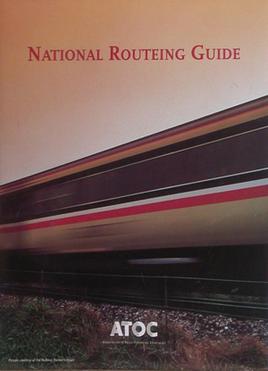
The National Routeing Guide is a document, the definitive resource on the validity of rail tickets for the purpose of rail travel in Great Britain. As stated by the Rail Regulator, "[it] sets out passengers' rights to use the network flexibly". It is a book produced by the Rail Delivery Group, which is carried by any rail ticket inspector and is also on hand for station staff.
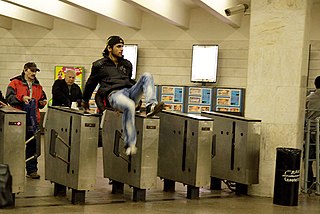
Fare evasion or fare dodging is the act of travel without payment on public transit. When considered problematic, it is mitigated by revenue protection officers and ticket barriers, staffed or automatic, are in place to ensure only those with valid tickets may access the transport. The term fare avoidance is sometimes used as a euphemistic synonym and sometimes used to refer to the lawful use of much cheaper tickets.
A penalty fare, standard fare, or fixed penalty notice is a special, usually higher, fare charged because a passenger using public transport did not comply with the normal ticket purchasing rules. It should not be confused with an unpaid fares notice.

The OV-chipkaart is a contactless smart card and integrated ticketing system used for all public transport in the Netherlands. First introduced in the Rotterdam Metro in April 2005, it has subsequently been rolled out to other areas and travel modes. It fully replaced the national strippenkaart system for buses, trams, and metro trains in 2011, and the paper ticket system for rail travel in July 2014.

Plusbus is an add-on ticket, which can be purchased with National Rail train tickets in the United Kingdom. It allows unlimited travel on participating bus and tram operators' services in the whole urban area of rail-served towns and cities.
